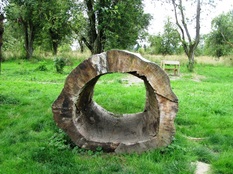Additional resources:
|
More info on natural play areas:
Indiana Dept. Forestry Outdoor Classroom Guide L&K Gin Family Gardens and Play Space Nature Playscapes: Bringing Wild Back to the Child (link to PDF) Green Schoolyard Network Green schoolyards as havens from stress and resources for resilience in childhood and adolescence - Research article from University of Colorado - Boulder |
How to create your own natural play area at school, church, home, etc.:
Nature Place & Learning Spaces Guidebook Nature Explore Earthplay Resources- Articles and Handbooks Nature Play at Home Guide How to Create Outdoor Play Spaces for Children that Encourage Unstructured Play Making Natural Play Spaces in the Backyard |
|
Example natural play areas:
St. Christopher's Episcopal Church Natural Play Area- Open to the public 1402 W Main St, Carmel, IN 46032 Certified Nature Explore Classrooms Cool Creek Park Nature Center and Nature Playground - Carmel Woodlawn Nature Center's Outdoor Class and Natural Playscape - Elkhart Mill Street Park Natural Playscape - Goshen Dexter and Southfield Schools - Massachusetts Homer Lake Natural Playscape - Champaign (IL) County Forest Preserve Playscapes Teardrop Park- NYC |
Natural play areas in the news:
Nature-based play area open at Portland park - Oregon Live.com More towns planning natural playgrounds- Burlington Free Press Natural playground inspires kids to be more active - WBIR Knoxville Can riskier playgrounds make healthier adults? - Syracuse.com Green schoolyards lower kids' stress - ahchealthenews.com |
Blogs:
Inside Out Michiana
Inside Out Michiana
“I am convinced that standardized playgrounds are dangerous, just in another way: When the distance between all the rungs in a climbing net or a ladder is exactly the same, the child has no need to concentrate on where he puts his feet. Standardization is dangerous because play becomes simplified and the child does not have to worry about his movement."
- Helle Nebelong
- Helle Nebelong


